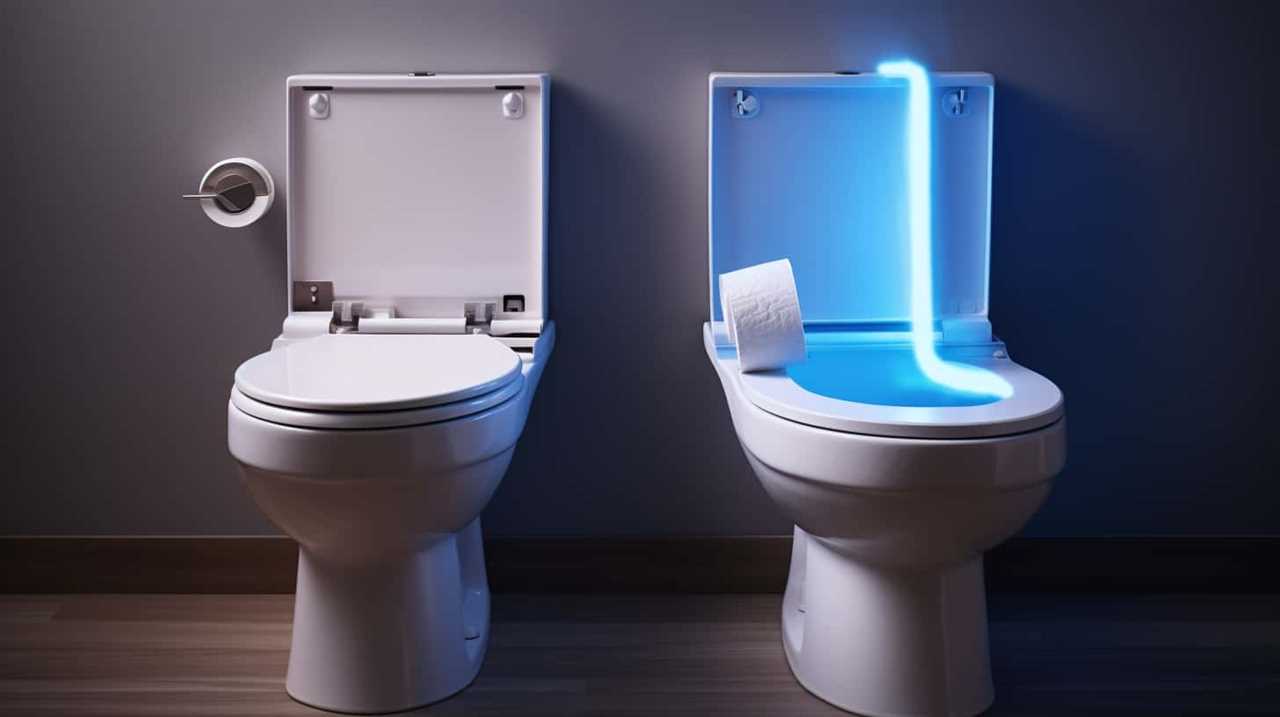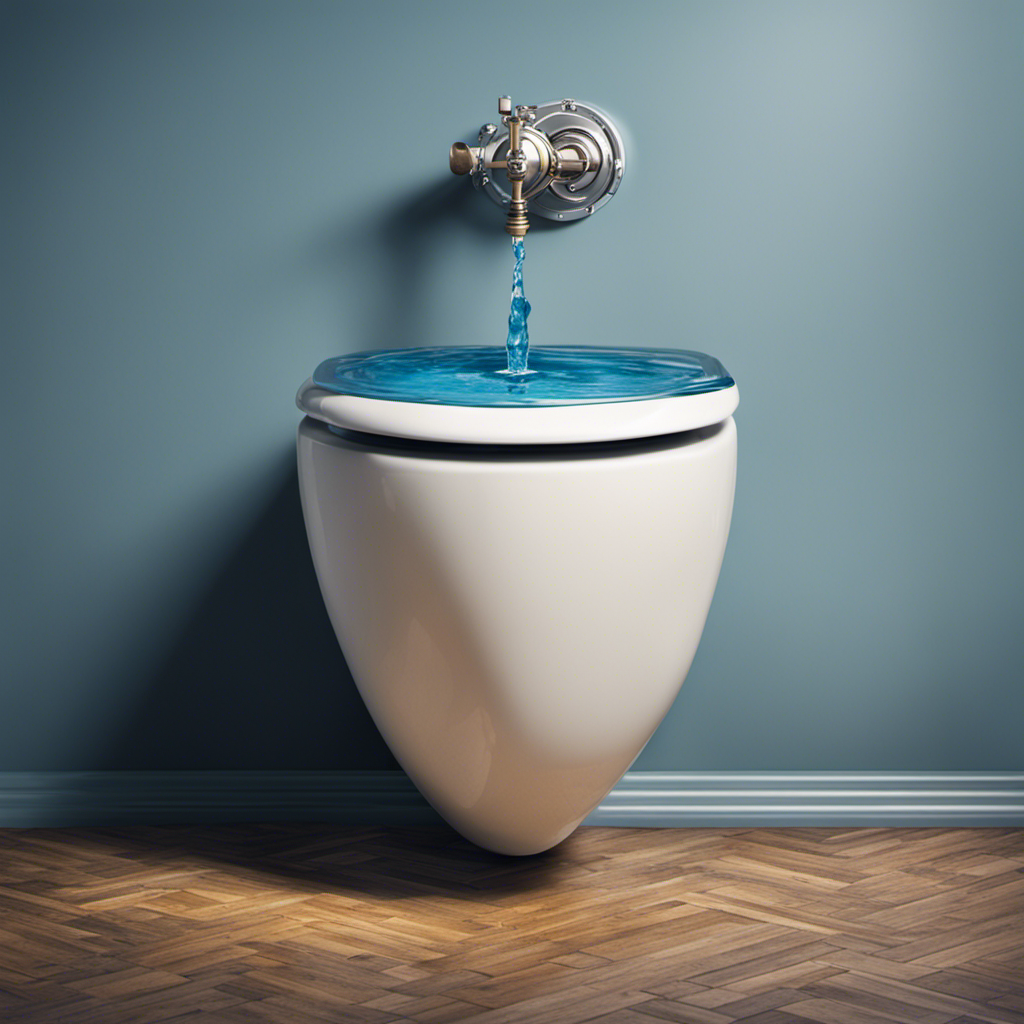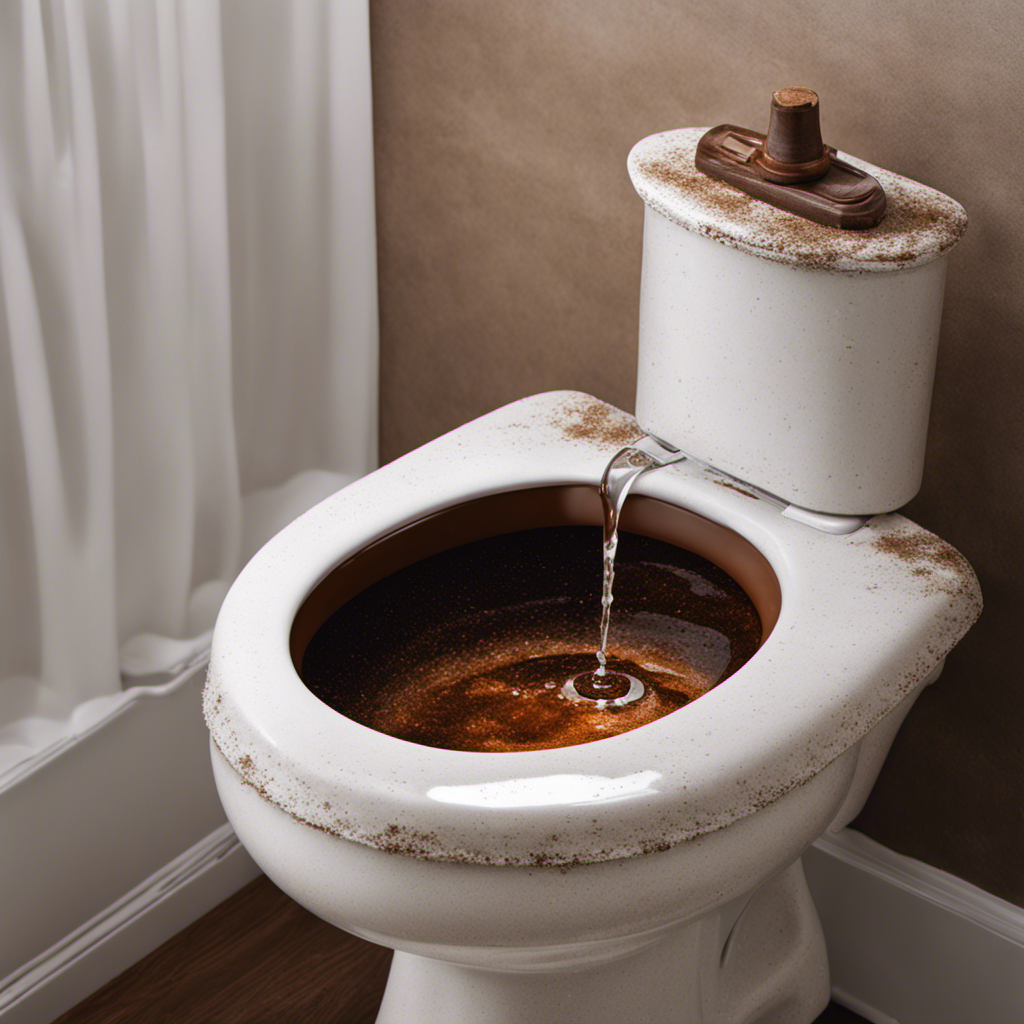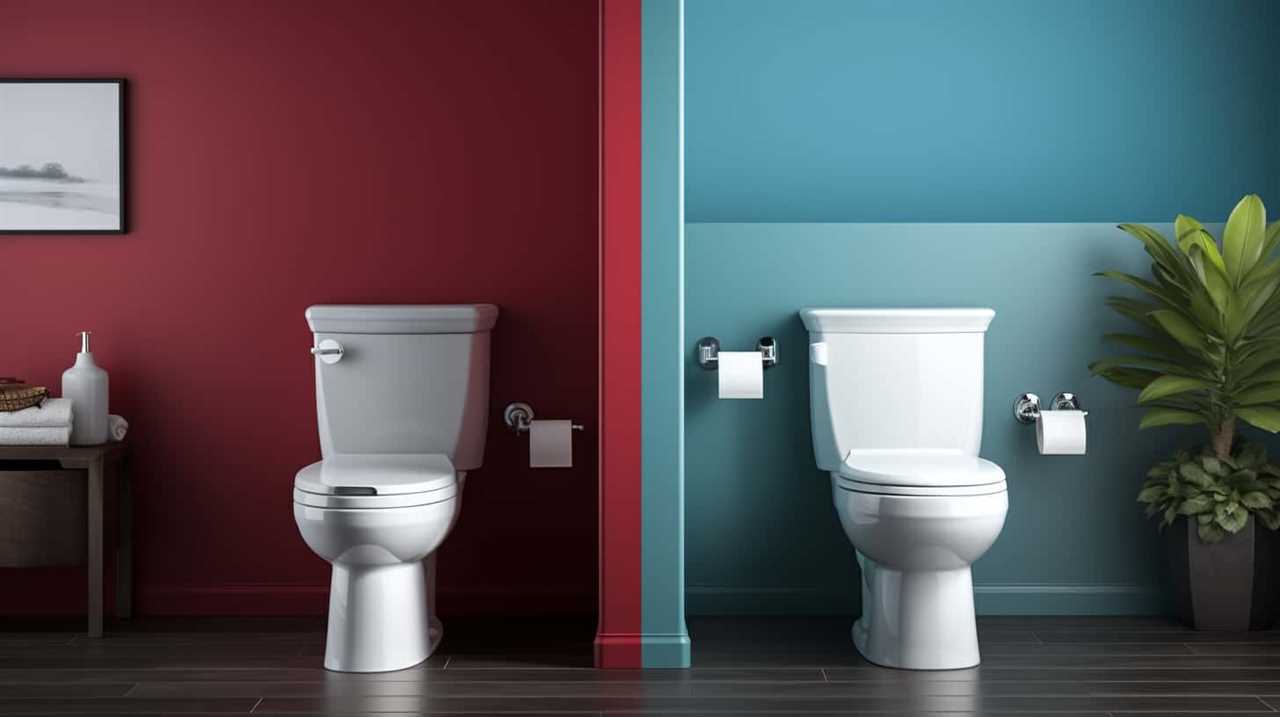It’s common knowledge that flushing the toilet is an essential aspect of our daily lives.
But have you ever stopped to consider just how wasteful it can be? The truth is, every time we flush, we’re using a significant amount of water and contributing to the strain on our water resources.
Not only that, but the energy consumption required for water treatment is also a concern.
In this article, we’ll explore the environmental cost of flushing and provide tips for more water-efficient alternatives.

Key Takeaways
- Flushing the toilet can result in a significant amount of water wastage, with an average person wasting 2,920 gallons of water per year just from flushing.
- Water-saving devices like dual-flush toilets and low-flow toilets can help reduce water usage and minimize wastage.
- It is important to implement water-saving technologies and encourage community water conservation efforts to address water scarcity concerns and promote efficient flushing.
- Excessive water use can strain plumbing systems and cause leaks, highlighting the need to improve flushing efficiency while minimizing water wastage.
The Amount of Water Used Per Flush
We use approximately 1.6 gallons of water per flush when we flush the toilet. This may not seem like a significant amount, but when you consider the number of times we flush each day, it quickly adds up. In fact, the average person flushes the toilet about 5 times a day, resulting in a daily water usage of 8 gallons just for flushing. Over the course of a year, this amounts to a staggering 2,920 gallons of water wasted solely on flushing.
However, there are ways to reduce this water footprint. Water-saving devices, such as dual-flush toilets and low-flow toilets, have been developed to minimize water usage during flushing. Dual-flush toilets allow users to choose between a half-flush for liquid waste and a full-flush for solid waste, saving significant amounts of water in the process. Low-flow toilets, on the other hand, use less water per flush by employing innovative flushing mechanisms.
By incorporating these water-saving devices into our homes and businesses, we can greatly reduce our water footprint associated with flushing. This not only helps conserve water, but also has a positive impact on our water resources.
Transitioning into the subsequent section about the impact on water resources, let’s now explore how our daily flushing habits affect the availability and quality of water.

Impact on Water Resources
Water scarcity concerns and the efficiency of flushing are two crucial points to consider when discussing the impact of flushing on water resources.
With increasing global water scarcity, it’s essential to analyze the amount of water wasted with each flush and explore ways to minimize this wastage.
Additionally, examining the efficiency of flushing systems can help identify opportunities for water conservation and sustainable use of this valuable resource.
Water Scarcity Concerns
As inhabitants of a water-scarce world, we must be mindful of the impact flushing the toilet has on our limited water resources. Here are some key points to consider:

- Water-saving technologies: Implementing low-flow toilets, dual flush systems, and water-efficient fixtures can significantly reduce water consumption during flushing.
- Community water conservation efforts: Encouraging individuals to participate in water-saving initiatives such as fixing leaks, using recycled water for non-potable purposes, and promoting responsible water usage can help conserve our dwindling water resources.
- Sustainable agricultural practices: Adopting irrigation techniques that minimize water wastage and promoting drought-resistant crops can alleviate the strain on water supplies.
- Water reuse and recycling: Implementing systems to treat and reuse wastewater for non-potable purposes such as irrigation or industrial processes can reduce the demand on freshwater sources.
Understanding the importance of water conservation and implementing these strategies is crucial in addressing water scarcity concerns. Now, let’s delve into the efficiency of flushing and its impact on water usage.
Efficiency of Flushing
One significant factor to consider is the amount of water wasted during the flushing process. Flushing toilets can have a significant impact on water resources, especially in areas where water scarcity is a concern. The average toilet flush uses about 1.6 gallons (6 liters) of water per flush, which can add up quickly, especially in households with multiple occupants. This not only puts pressure on water resources but also impacts plumbing systems, as the excessive use of water can strain pipes and lead to leaks or other issues.
To address these concerns, water saving initiatives have been introduced. Dual-flush toilets, for example, allow users to choose between a full flush for solid waste and a reduced flush for liquid waste, significantly reducing water consumption. Other initiatives include the use of low-flow toilets, which are designed to use less water per flush without compromising efficiency.
Considering the impact on plumbing systems and the need for conservation, it’s crucial to explore ways to improve the efficiency of flushing while minimizing water wastage. However, it isn’t just water resources that are affected by flushing; the process also has implications for energy consumption in water treatment.
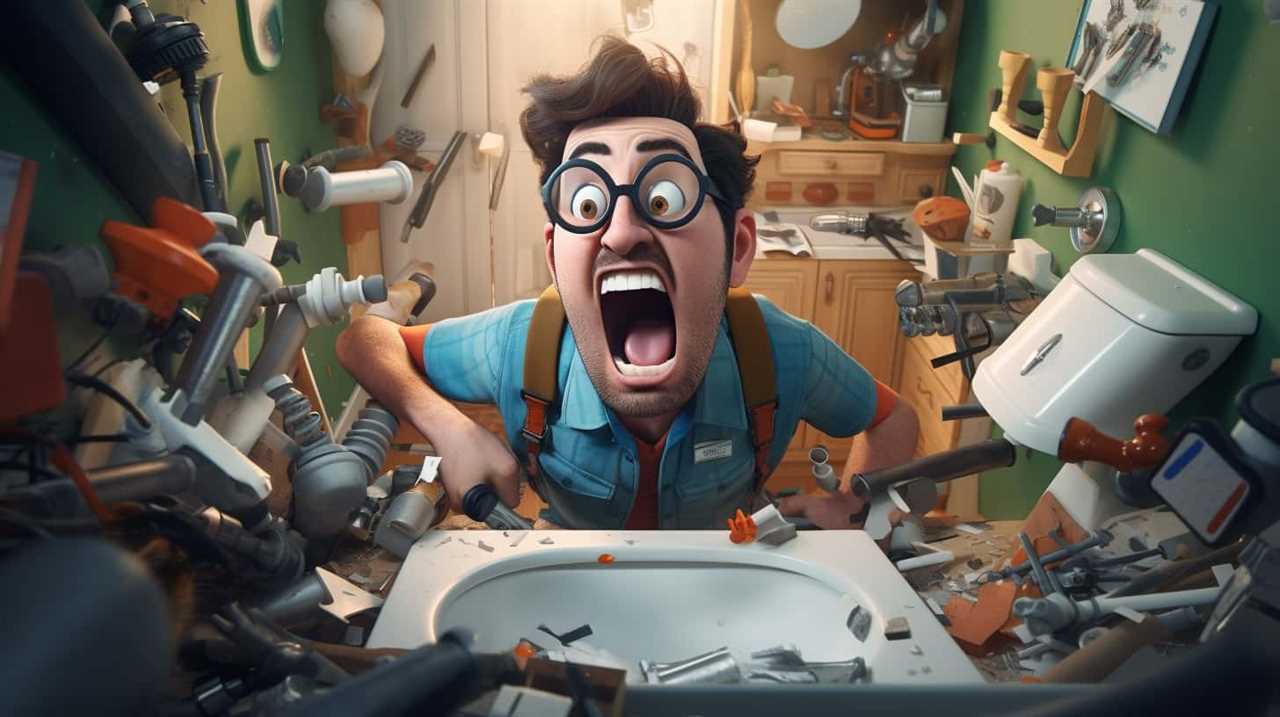
Energy Consumption in Water Treatment
We consume approximately 4% of the world’s energy supply in the process of treating water for everyday use. This energy consumption in water treatment has a significant impact on our carbon footprint. Here are four key points to consider:
- Water treatment efficiency: The efficiency of water treatment processes plays a crucial role in reducing energy consumption. By implementing advanced technologies and optimizing the treatment processes, we can minimize the energy required for water treatment.
- Chemical usage: Chemicals used in water treatment, such as coagulants and disinfectants, can contribute to energy consumption. Finding alternative, energy-efficient chemicals or reducing the overall chemical usage can help minimize the carbon footprint.
- Renewable energy sources: Incorporating renewable energy sources into water treatment facilities can significantly reduce energy consumption and carbon emissions. Utilizing solar, wind, or hydroelectric power can make the treatment processes more sustainable and environmentally friendly.
- Wastewater treatment: Treating wastewater to make it reusable not only reduces water scarcity but also has an impact on energy consumption. Developing efficient wastewater treatment technologies can help minimize the energy required for treating and reusing wastewater, further reducing our carbon footprint.
The Environmental Cost of Flushing
Flushing the toilet has a significant environmental cost, contributing to the depletion of water resources and the release of pollutants. The act of flushing not only consumes a significant amount of water, but it also introduces harmful substances into the wastewater stream. Traditional toilets use approximately 1.6 gallons (6 liters) of water per flush, leading to excessive water consumption.
However, water-saving innovations such as dual flush toilets, low-flow toilets, and composting toilets have been developed to address this issue. These innovations significantly reduce water usage, with some models using as little as 0.8 gallons (3 liters) per flush. By adopting these water-saving technologies, individuals can contribute to the conservation of water resources.
Moreover, the impact of flushing on marine ecosystems can’t be overlooked. The release of wastewater into rivers and oceans can introduce pollutants such as nitrogen and phosphorus, which can lead to excessive algal growth and oxygen depletion in water bodies. This can harm marine life and disrupt the delicate balance of ecosystems. Additionally, pharmaceuticals and personal care products that are flushed down the toilet can also end up in water bodies, posing risks to aquatic organisms.

Water-Wasting Habits to Avoid
As we consider the environmental impact of flushing the toilet, it’s important to address water-wasting habits that should be avoided. By adopting water-saving initiatives and taking advantage of toilet design improvements, we can significantly reduce our water consumption and minimize wastage.
Here are four water-wasting habits to avoid:
- Running faucets: Leaving the tap running while brushing our teeth or doing dishes can lead to a significant amount of water wastage. By turning off the faucet when not in use, we can conserve water and contribute to a more sustainable future.
- Ignoring leaks: Even a small leak can waste a large amount of water over time. Regularly check faucets, pipes, and toilets for leaks and make necessary repairs promptly to prevent unnecessary water loss.
- Overwatering plants: While plants need water to thrive, overwatering can lead to excessive water usage. Use a watering can or a drip irrigation system to provide plants with the right amount of water, avoiding water wastage.
- Taking long showers: Long, leisurely showers can be relaxing, but they also consume a significant amount of water. Consider shortening your shower time to conserve water, or invest in low-flow showerheads that can significantly reduce water usage without compromising on the experience.
Innovative Technologies for Water Conservation
To further address water-wasting habits and their impact on the environment, let’s explore some innovative technologies for water conservation.
One effective way to conserve water is through toilet retrofitting. This involves installing water-saving devices in existing toilets to reduce the amount of water used per flush. One popular retrofitting option is the dual-flush toilet, which allows users to choose between a low-volume flush for liquid waste and a higher-volume flush for solid waste. By giving users more control over water usage, dual-flush toilets can significantly reduce water wastage.
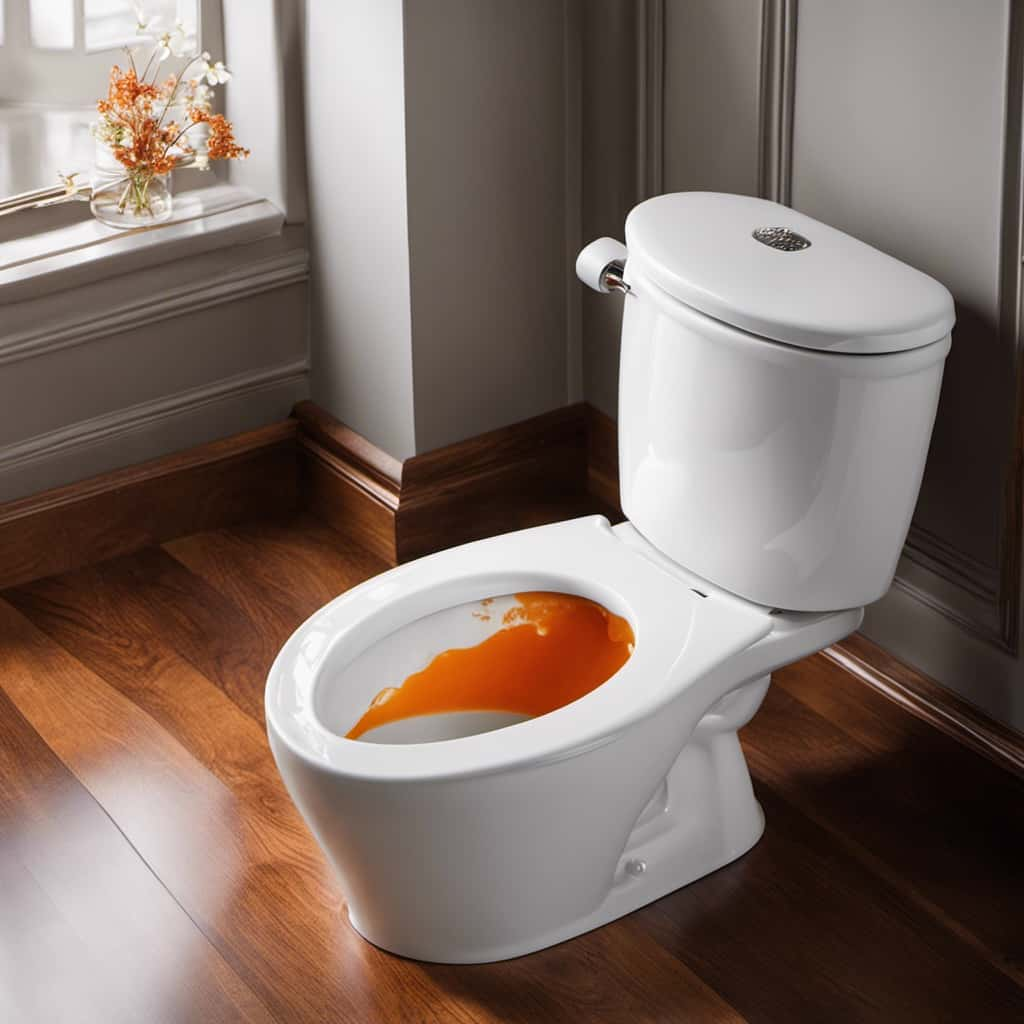
Another innovative technology for water conservation is smart water monitoring. This involves the use of sensors and advanced analytics to track water usage in real-time. Smart water monitoring systems can detect leaks and provide detailed insights on water consumption patterns, helping users identify areas where water is being wasted. These systems can also provide alerts and notifications to prompt users to take action and conserve water.
Furthermore, some smart water monitoring systems can be integrated with smart home devices, allowing users to remotely monitor and control water usage. This enables users to adjust water settings, such as irrigation schedules or shower duration, to minimize water wastage. By harnessing the power of technology, smart water monitoring systems provide an efficient and convenient way to conserve water.
Toilet Alternatives for Water Efficiency
Our exploration of innovative technologies for water conservation has led us to consider toilet alternatives that prioritize water efficiency. Here are some options to consider:
- Toilet Composting: This eco-friendly alternative allows waste to be converted into nutrient-rich compost. It uses little to no water, reducing water consumption significantly. The compost can be used as fertilizer for plants, promoting sustainability.
- Dual Flush Toilets: These toilets offer two flush options – a light flush for liquid waste and a heavy flush for solid waste. By giving users the choice, water can be conserved when a full flush isn’t necessary. This can result in substantial water savings over time.
- Waterless Urinals: These urinals eliminate the need for water altogether. Instead, they use a special trap that prevents odors and bacteria from escaping. The absence of water usage not only saves water but also reduces maintenance costs.
- Vacuum Toilets: These toilets use air pressure to flush waste, requiring minimal water. By using a vacuum system, they’re highly efficient and can reduce water consumption significantly.
By exploring these toilet alternatives, we can make a significant impact in conserving water resources.
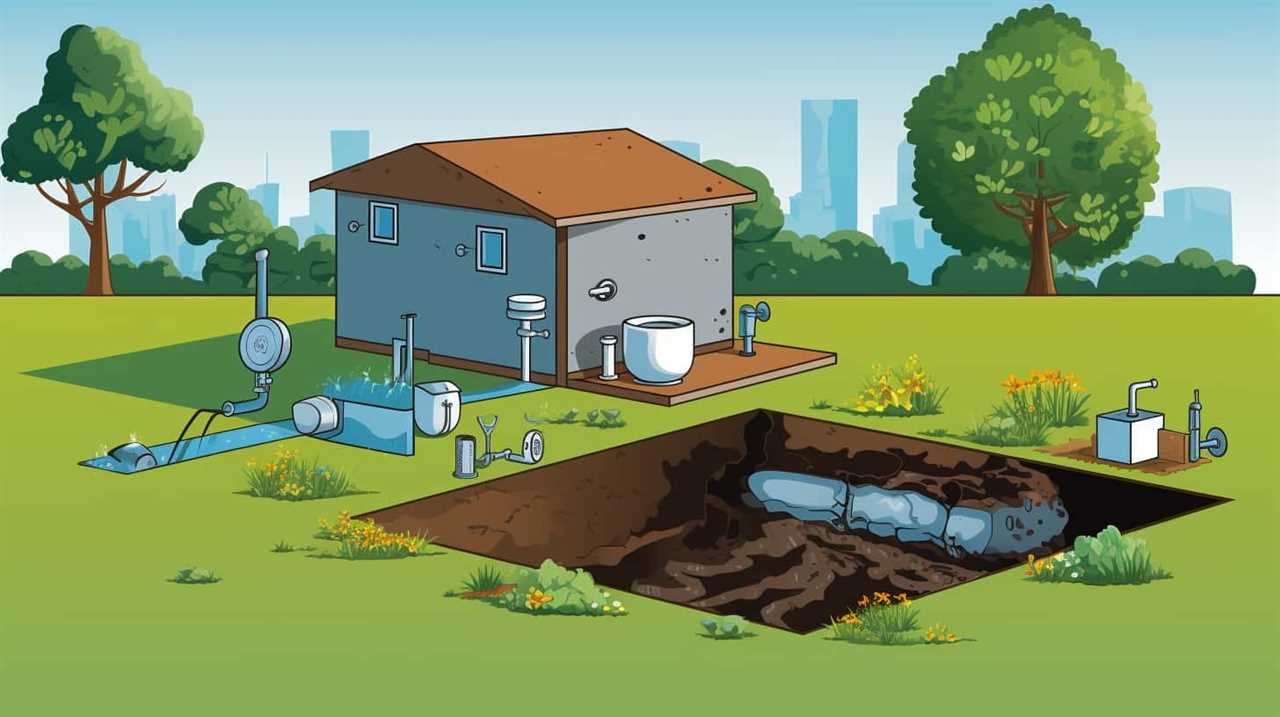
Transitioning to more water-efficient technologies is crucial in addressing the global water crisis and ensuring a sustainable future.
Global Perspectives on Toilet Flushing
Transitioning to more water-efficient toilet alternatives is essential in addressing the global water crisis and ensuring a sustainable future. When considering the global perspective on toilet flushing, it’s important to understand the significant impact it has on global water consumption. Different countries and cultures have varying attitudes and practices when it comes to toilet flushing, which can contribute to the overall water consumption.
In many developed countries, toilets are equipped with water-saving mechanisms such as dual-flush systems or low-flow toilets. These innovations have significantly reduced water usage per flush, helping to conserve water resources. However, in some developing countries, traditional flush toilets are still prevalent, leading to higher water consumption. This is often due to a lack of awareness, infrastructure, or funds to invest in water-saving technologies.
Cultural perspectives also play a role in toilet flushing habits. In some cultures, there’s a preference for frequent flushing, even for minimal waste. This can result in unnecessary water wastage. Conversely, in other cultures, there may be a tendency to conserve water by minimizing toilet flushing, which can lead to hygiene and sanitation issues.
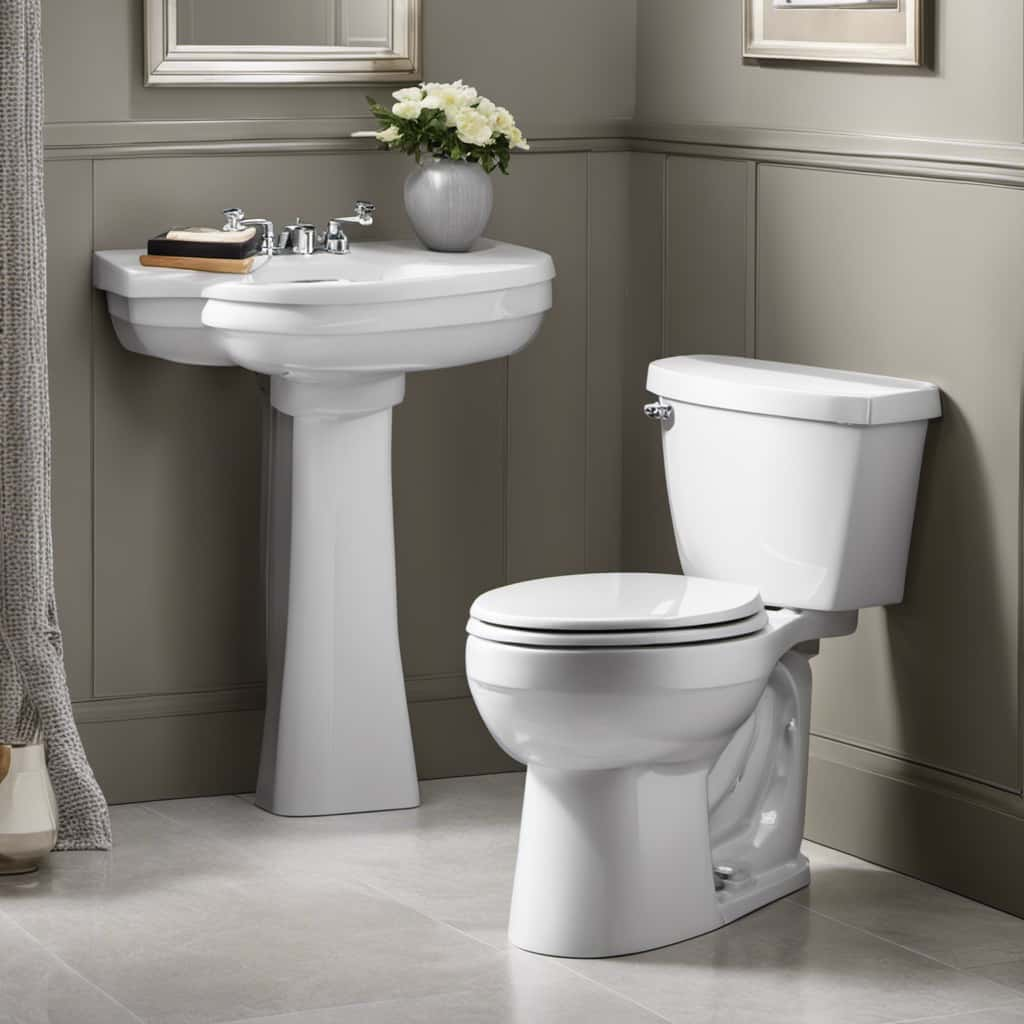
To address these global perspectives on toilet flushing, education and awareness campaigns are crucial. Encouraging the adoption of water-efficient toilet alternatives and promoting responsible flushing practices can help reduce global water consumption and contribute to a more sustainable future.
Water-Saving Tips for a Greener Bathroom
When it comes to saving water in the bathroom, there are several effective strategies to consider.
First, installing efficient toilet fixtures, such as low-flow toilets or dual-flush toilets, can significantly reduce water usage per flush.
Additionally, shortening shower times and turning off the faucet while brushing teeth can save gallons of water each day.
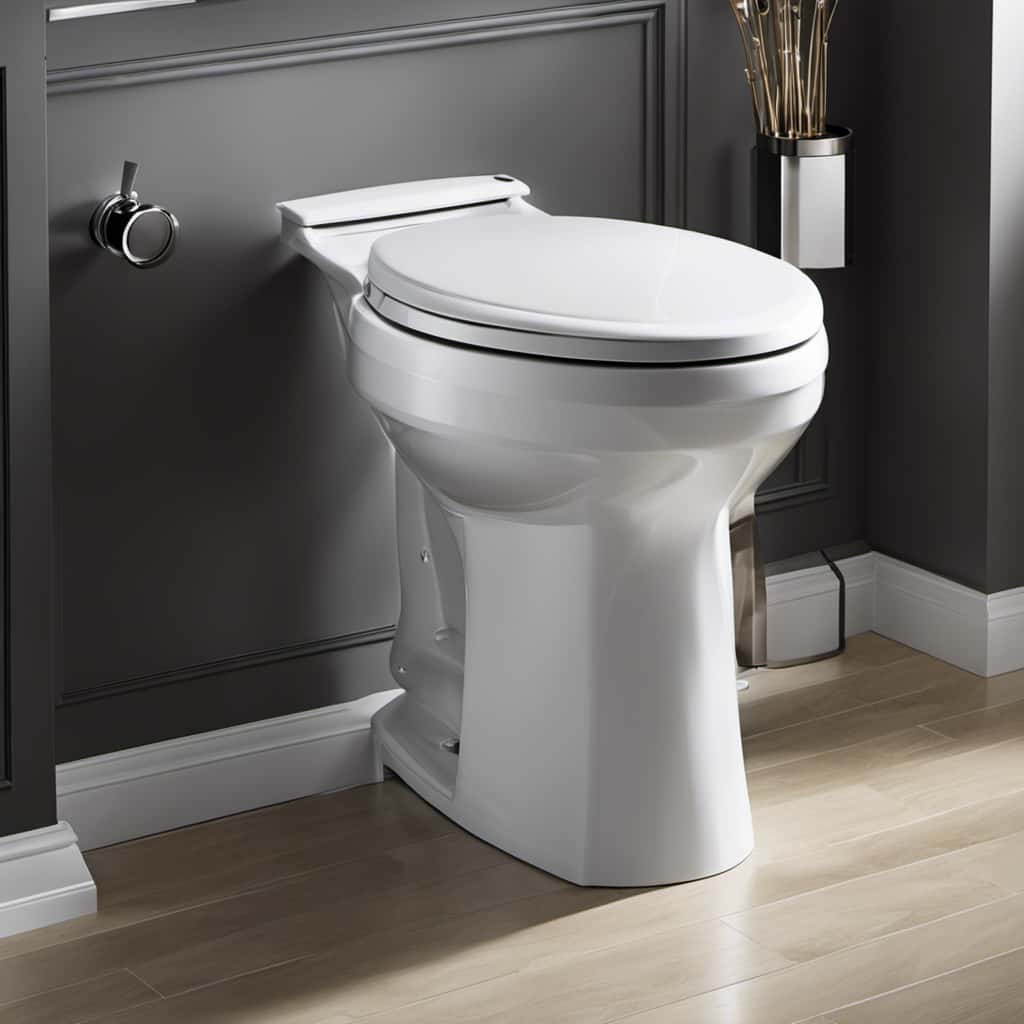
Lastly, reusing greywater, which is water from sinks or showers, for purposes like watering plants can help conserve water resources.
Efficient Toilet Fixtures
Installing efficient toilet fixtures is a key step towards creating a greener bathroom and conserving water. Here are four water-saving strategies that can be achieved through efficient toilet design:
- Dual-flush toilets: These fixtures have two flushing options – one for liquid waste and another for solid waste. By using the appropriate flush, you can save a significant amount of water.
- Low-flow toilets: These toilets are designed to use less water per flush compared to traditional models. They use advanced flushing technology to ensure efficient waste removal while conserving water.
- Water-efficient flush valves: Upgrading to a water-efficient flush valve can reduce the amount of water used per flush. These valves release a controlled amount of water, ensuring effective flushing without wasting excess water.
- Toilet tank displacement devices: Placing an object, such as a brick or a toilet tank bag, in the toilet tank can displace water and reduce the amount of water used for each flush.
Shorter Shower Times
To further reduce water consumption in the bathroom, we can also focus on shorter shower times. By reducing the amount of time we spend in the shower, we can significantly decrease our water usage and contribute to a greener environment.
One effective way to achieve this is by installing water-saving showerheads. These showerheads are designed to restrict water flow without compromising the shower experience. They use innovative technology to mix air with water, creating a powerful spray while using less water. By opting for water-saving showerheads, we can conserve a significant amount of water without sacrificing the quality of our showers.

Additionally, it’s important to be mindful of our shower habits and aim for efficient and quick showers. Taking shorter showers not only saves water but also reduces energy consumption, as less water needs to be heated.
Reusing Greywater Responsibly
How can we responsibly reuse greywater to create a greener bathroom? Greywater recycling and water reuse systems are effective ways to reduce water waste and promote sustainability in our homes. Here are four tips to help you incorporate greywater reuse into your bathroom:
- Install a greywater recycling system: These systems collect water from sources such as sinks, showers, and laundry, filter it, and treat it for reuse in flushing toilets or irrigating plants.
- Use greywater for toilet flushing: By diverting greywater to flush toilets, you can significantly reduce the amount of freshwater consumed.
- Water plants with greywater: Reusing greywater to water your plants not only conserves water but also provides them with nutrients.
- Ensure proper treatment and filtration: It’s important to use appropriate treatment methods and filters to remove contaminants from greywater before reuse.
The Future of Toilet Flushing: Sustainable Solutions
We frequently overlook the potential for sustainable solutions in the future of toilet flushing. As the world becomes more conscious of the need to conserve resources and reduce waste, it is important to consider innovations in toilet design and sustainable sanitation practices.
Toilet design innovations can play a crucial role in minimizing water consumption and maximizing efficiency. One example is the dual-flush toilet, which allows users to choose between a full flush for solid waste and a partial flush for liquid waste. This simple design modification can significantly reduce water usage without compromising hygiene.
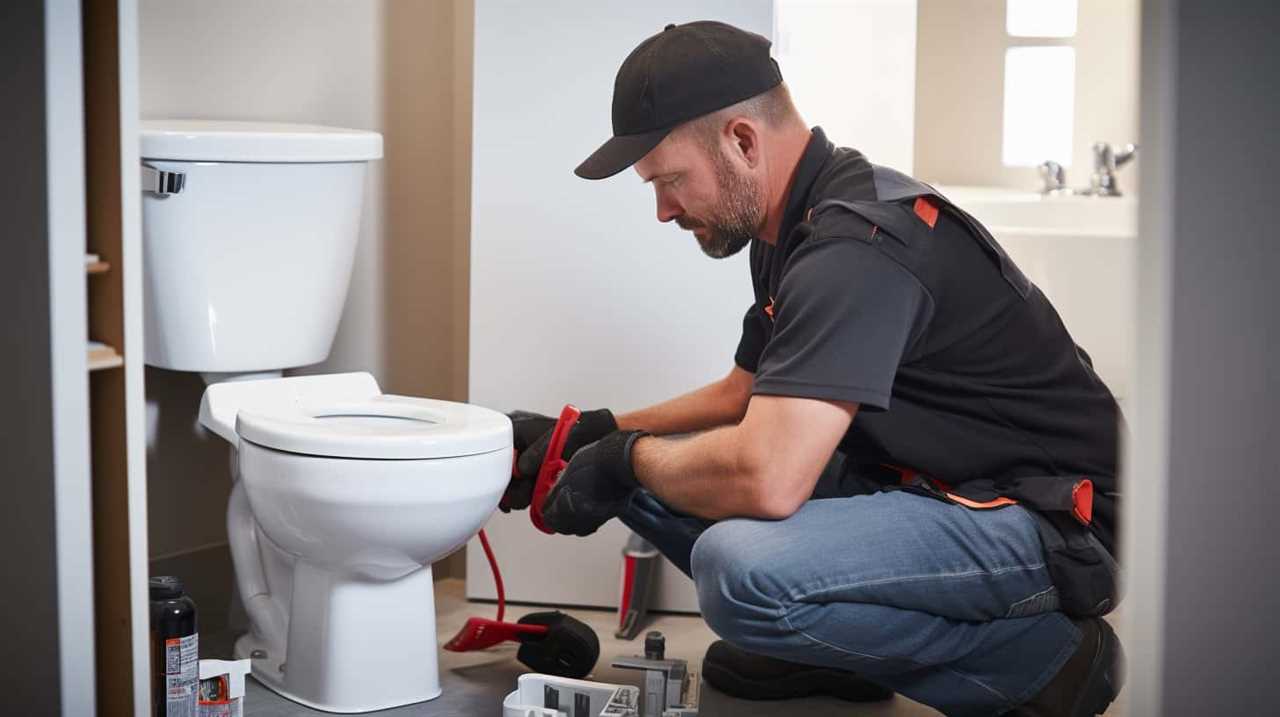
Another sustainable solution is the use of composting toilets. These toilets separate solid waste from liquid waste, allowing for the decomposition of organic matter. The resulting compost can then be used as a nutrient-rich fertilizer for plants. Composting toilets not only save water but also contribute to the reduction of wastewater treatment and the production of harmful byproducts.
In addition to toilet design innovations, implementing sustainable sanitation practices can further enhance the future of toilet flushing. This includes the use of greywater systems, which recycle water from sinks, showers, and laundry for flushing toilets. Greywater, when treated properly, can be a safe and viable alternative to fresh water for toilet flushing.
By embracing these sustainable solutions, we can significantly reduce water waste and promote more environmentally friendly practices in the future of toilet flushing. It is essential for individuals, communities, and governments to invest in and adopt these innovations to ensure a more sustainable future.
| Sustainable Solution | Benefits |
|---|---|
| Dual-flush toilets | Reduces water usage |
| Composting toilets | Saves water and produces compost |
| Greywater systems | Recycles water for toilet flushing |
| Waterless toilets | Eliminates the need for water altogether |
| Vacuum-assist toilets | Uses less water and reduces clogs |
Frequently Asked Questions
How Does Flushing the Toilet Affect the Quality of Water in Rivers and Lakes?
Flushing the toilet can have a significant impact on the quality of water in rivers and lakes. The water that goes down the drain carries various pollutants, such as bacteria, chemicals, and pharmaceuticals. These contaminants can end up in our water sources, leading to water pollution and negatively affecting the environment.
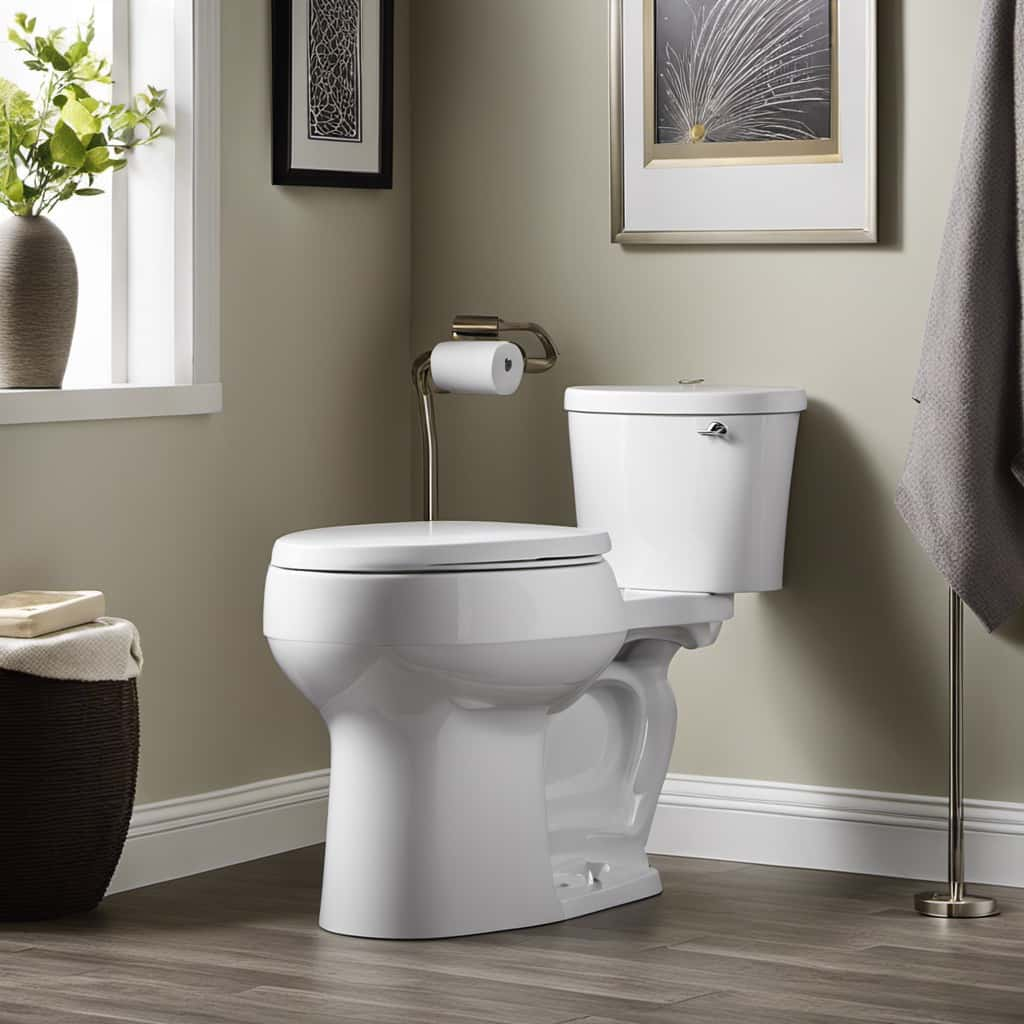
It’s crucial to be mindful of our flushing habits and consider water conservation methods to lessen the environmental impact and preserve the quality of our water resources.
Are There Any Health Risks Associated With Flushing the Toilet?
There are several health benefits associated with flushing the toilet. Proper disposal of waste helps prevent the spread of diseases and bacteria, ensuring a clean and hygienic environment.
However, it’s important to consider the environmental impact of excessive toilet flushing. The use of water can be wasteful, especially in regions facing water scarcity.
Implementing water-saving measures such as dual-flush toilets or using gray water for flushing can help reduce this impact and promote sustainability.
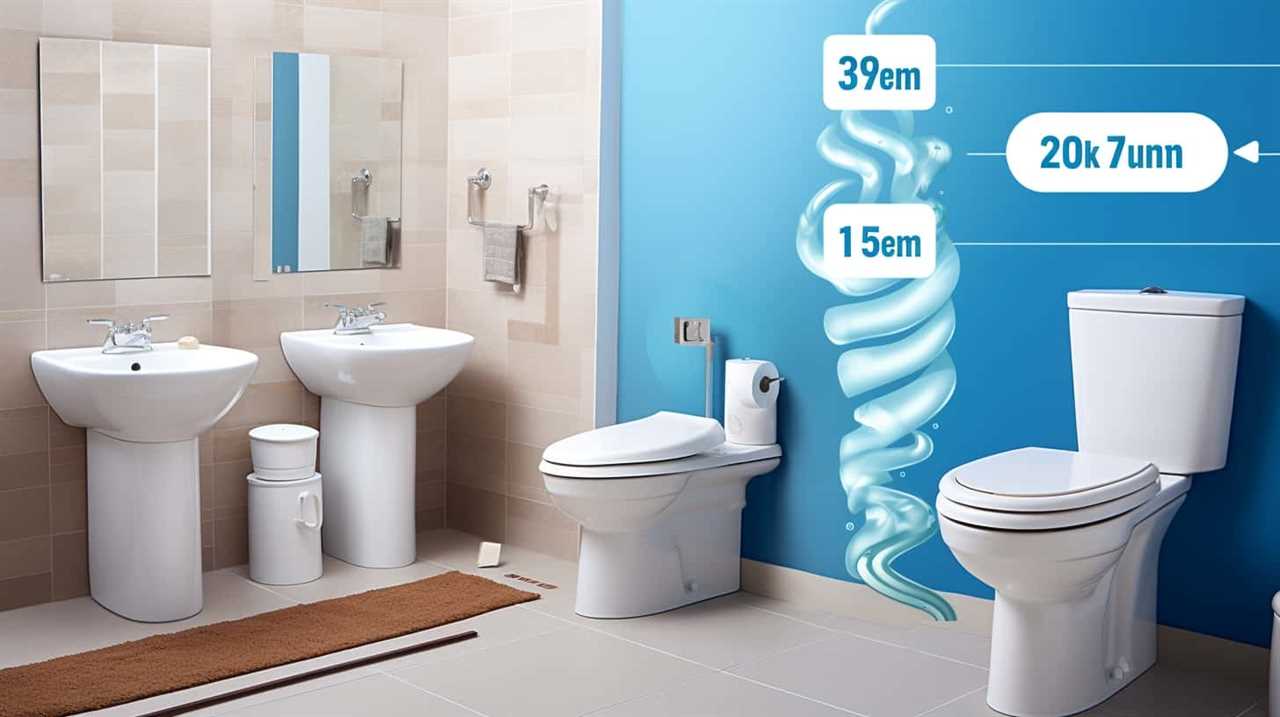
What Are Some Common Misconceptions About Water Usage and Flushing the Toilet?
Common misconceptions about water usage and flushing the toilet often lead to wasteful practices.
Many believe that flushing less frequently will conserve water, but in reality, it can lead to unsanitary conditions.
Another misconception is that using a low-flow toilet is the only strategy for water conservation, neglecting other simple actions like fixing leaks or reducing shower time.
How Does Flushing the Toilet Contribute to Greenhouse Gas Emissions?
Toilet flushing impact on greenhouse gas emissions is an important aspect of understanding toilet water consumption. Flushing the toilet utilizes water, which in turn requires energy for treatment and distribution. This energy often comes from fossil fuel sources, contributing to carbon emissions.
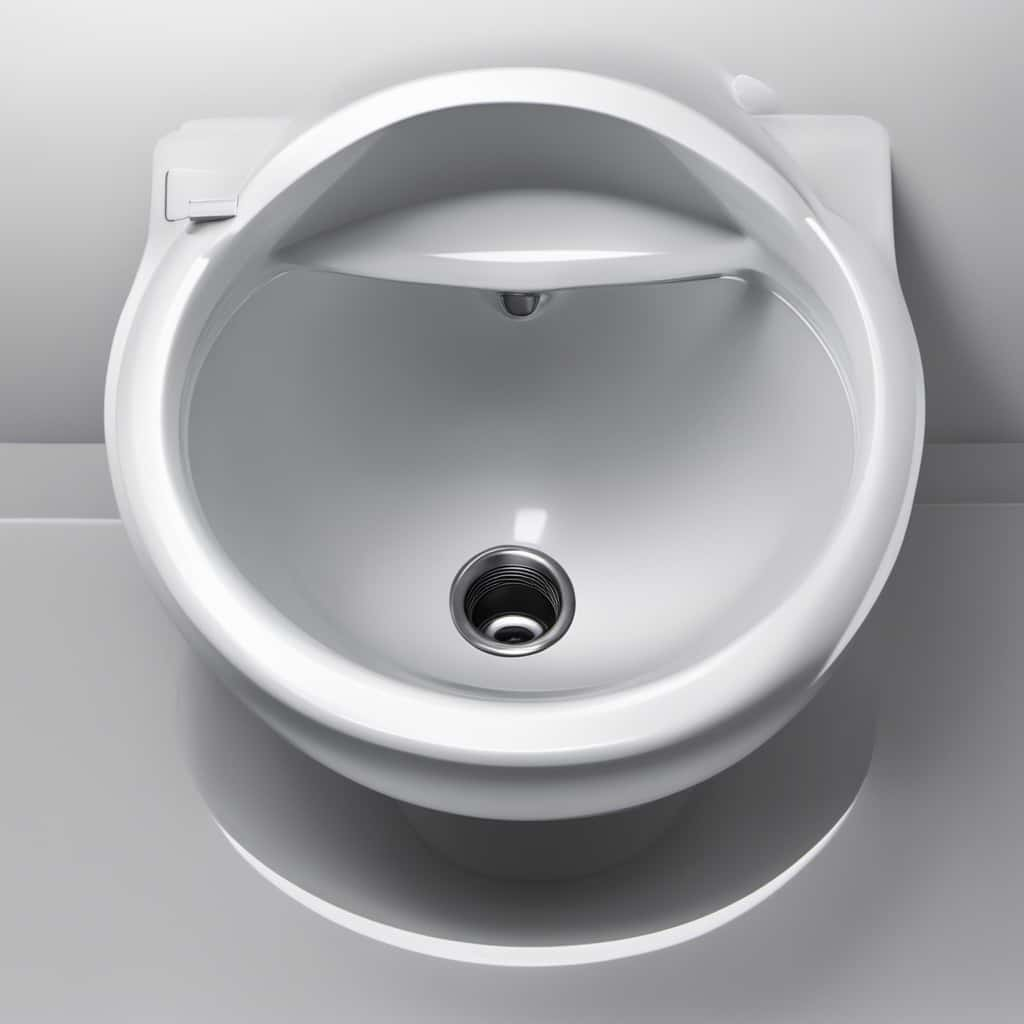
Additionally, the treatment process can release methane, a potent greenhouse gas. Therefore, it’s crucial to consider the environmental implications of our daily toilet flushing habits and explore more sustainable alternatives.
Can Flushing the Toilet Lead to Water Shortages in Certain Regions?
Flushing the toilet can have an impact on water conservation, especially in regions prone to water shortages. Depending on the efficiency of the toilet system, a significant amount of water may be wasted with each flush. This can strain local water resources and contribute to scarcity.
However, it’s important to balance water conservation with the need for proper sanitation. Implementing more efficient toilets and promoting responsible water usage can help mitigate these issues.
Conclusion
In conclusion, the act of flushing the toilet may seem small, but its impact on water resources and the environment is significant.
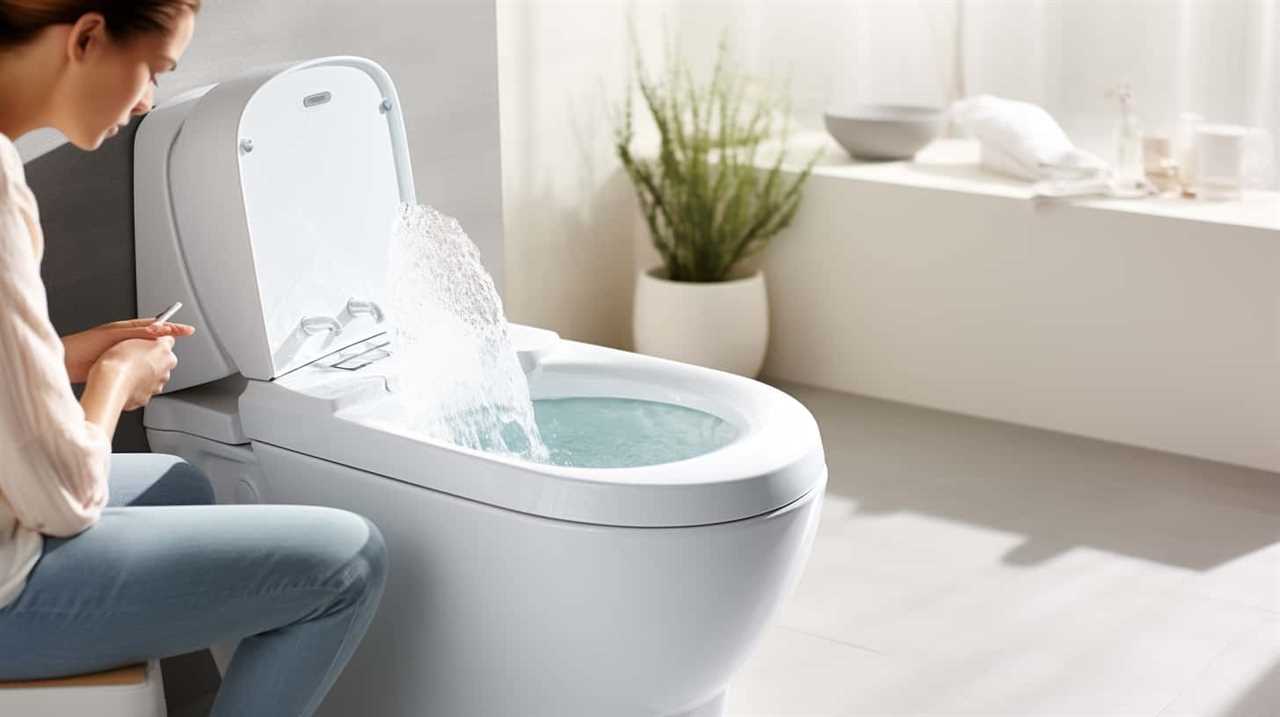
Did you know that each flush can use up to 7 gallons of water? That’s equivalent to filling 56 water bottles!
Imagining all the water wasted with each flush should inspire us to adopt water-saving habits and explore sustainable solutions for a greener future.
Let’s make every flush count towards conserving our precious resources.

